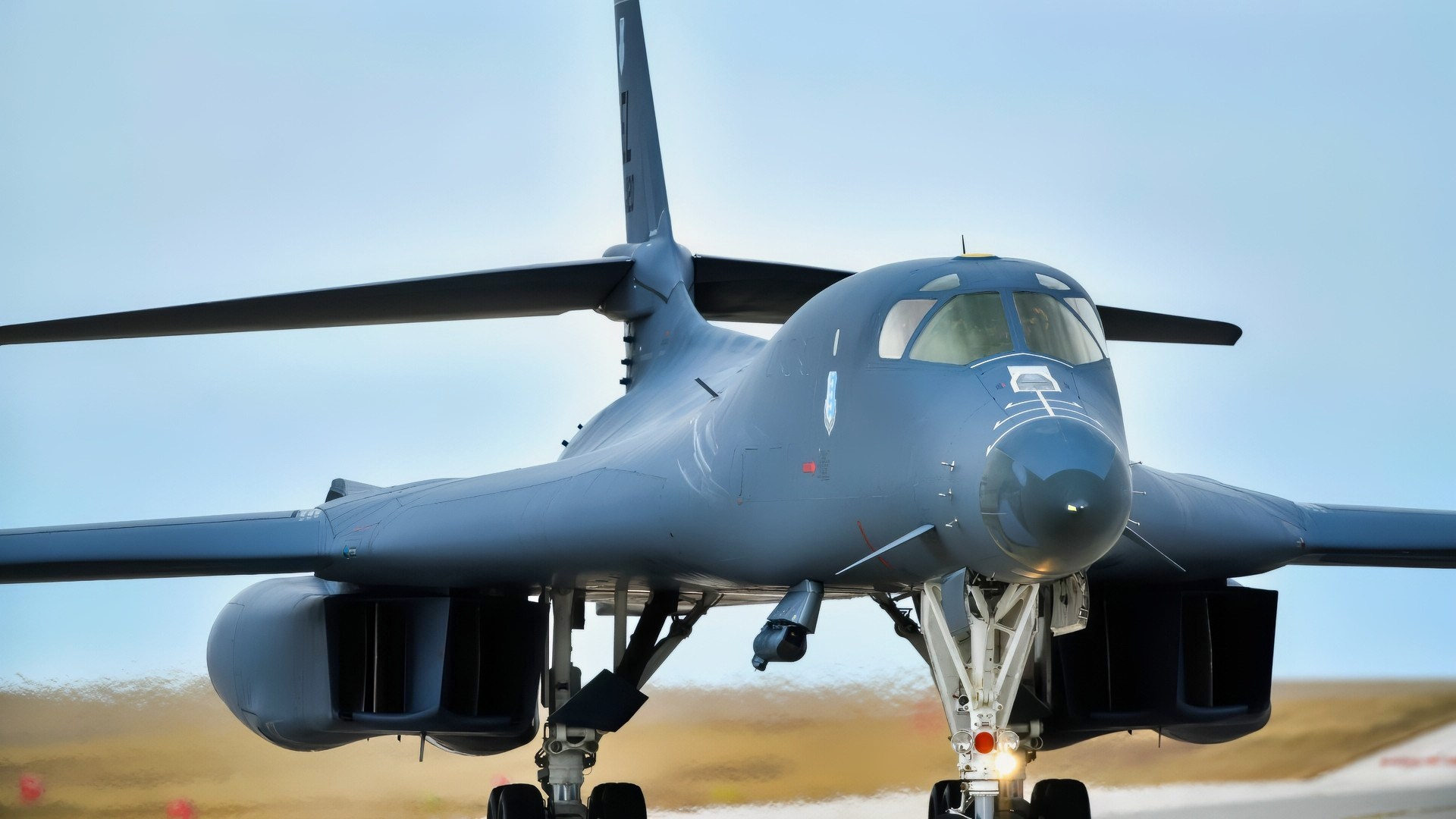Key Points and Summary – The United States still flies the world’s most experienced bomber force—but it’s a museum of eras.
-The stealthy B-2, the Cold War B-52, and the swing-wing B-1B keep doing real work, yet each was designed for a different threat.
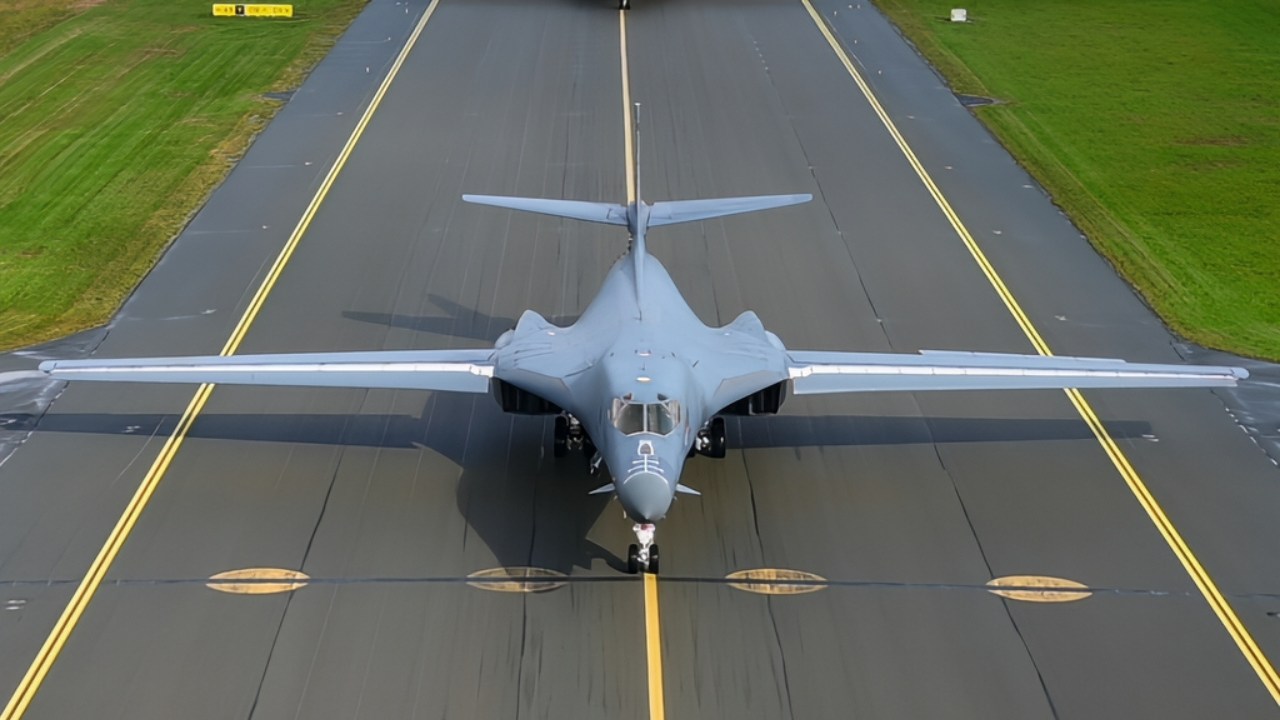
A U.S. Air Force Airman, assigned to the 345th Expeditionary Bomb Squadron, stands a B-1B Lancer during a Bomber Task Force Europe mission at Ørland Air Base, Norway, Aug. 21, 2025. BTF missions expose and familiarize aircrew with air bases and operations in different geographic combatant command areas of operations to enable strategic access and integration with coalition forces to deter global conflict. (U.S. Air Force photo by Staff Sgt. Tambri Cason)
-China and Russia have layered air defenses and long-range missiles that punish predictable tanker routes and non-stealthy profiles.
-The B-21 Raider will fix much of this, but not fast; building enough airframes and munitions will take years.
-Until then, the Air Force must stretch the old fleet with smarter tactics, longer-reach weapons, and teaming with drones—while funding the B-21 at a scale that actually changes the map.
The Bomber Paradox At The Heart Of U.S. Airpower
America’s bomber force is both enviable and awkward.
Enviable because no one else has anything like it: global reach on short notice, crews trained to thread complex defenses, and a menu of weapons that can crack bunkers or blind radars.
Awkward because the airplanes doing that work were either designed decades ago or built in very small numbers.
And want to make this even weirder?
The bombers that power the U.S. Air Force today all sit, and yes, older variants, in the U.S. Air Force’s museum in Dayton, Ohio. I know, as I was there in June and thought, while very incredible, also a testament to the age problem the Air Force faces when it comes to bombers.
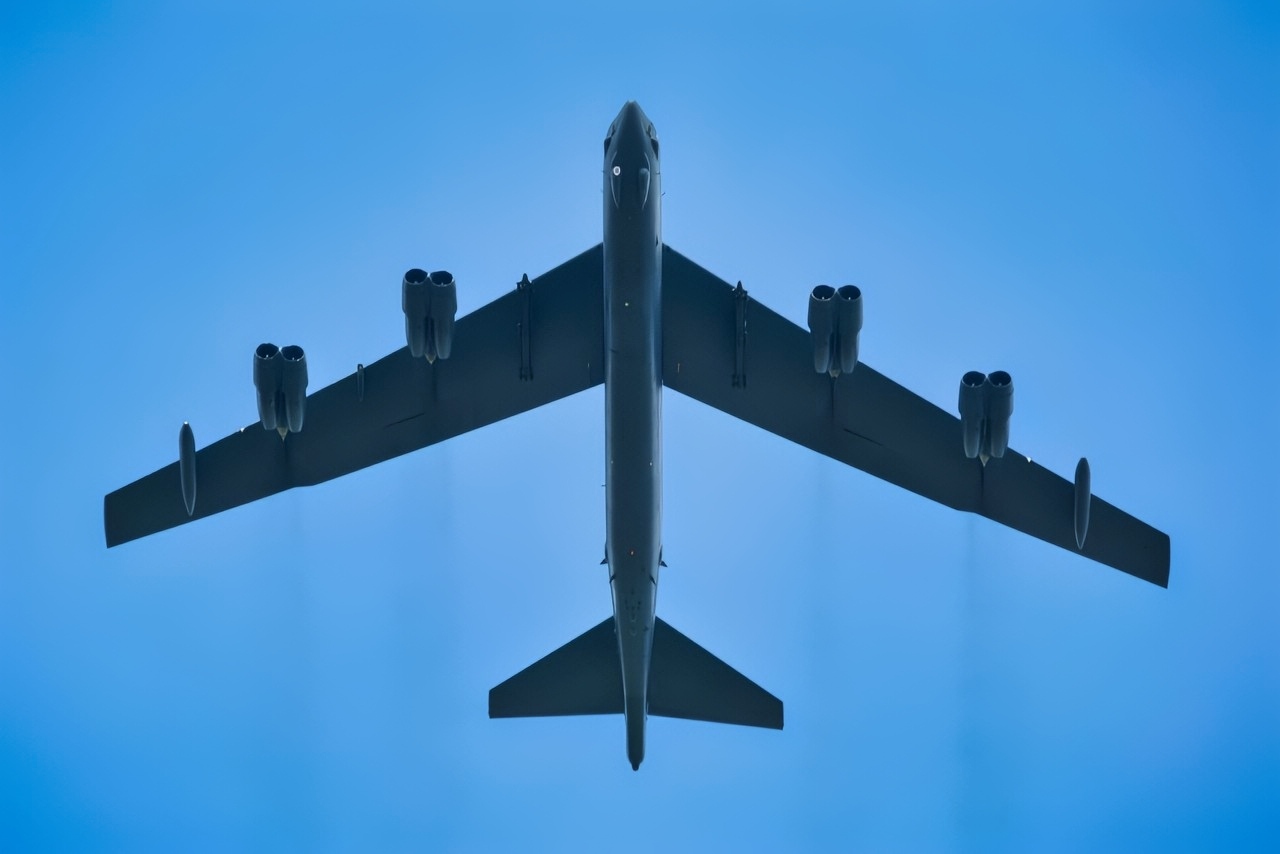
Military service members, veterans, and citizens of Guam gathered for the Memorial Day Commemoration at the Guam Veterans Cemetery. The Ceremony consisted of a fly over from a B-52H Stratofortress, a musical performance from the Guam Territorial Band & Cantate, guest speaking from the honorable Eddie Baza Calvo, a Fallen Soldier Gravesite Tribute, and the playing of Taps. (U.S. Marine Corps photo by Lance Cpl. Jacob Snouffer/Released)
But, anyway, back to the business at hand. Let’s consider for a second just how old these bombers are:
B-52H Stratofortress: a 1960s design that’s been endlessly updated. It’s the world’s ultimate missile truck—able to lug standoff cruise missiles and mines for oceans at a time—but it’s not sneaking past modern radars. Updates in a new B-52J are moving forward, but costs might kill the program for good.
B-1B Lancer: born to sprint under Soviet radars, repurposed for conventional strikes. It hits hard and fast but requires meticulous maintenance and now lives strictly in the non-nuclear world.
B-2A Spirit: the stealth outlier. It can penetrate where others can’t, but the fleet is tiny, the maintenance intense, and the aircraft are too precious to risk casually.
All three still matter. But the threat evolved. China’s and Russia’s air-defense networks—radars that cooperate across multiple frequencies, long-range surface-to-air missiles, and fighter patrols guided by airborne warning planes—have made simply “flying closer” a risky choice.
Even the stealthy B-2 depends on carefully planned routes, electronic warfare, and tanker support to do its job with acceptable risk.
And for the B-52 and B-1B, the practical answer has been to stand off and let very long-range weapons do the penetrating.
That buys safety. It also buys a new problem: time and inventory. Long-range weapons are expensive and finite, and a serious fight could burn through stockpiles fast.
Why Old Airframes Are A Strategic, Not Just Technical, Risk
It’s easy to frame this as “old versus new.” The deeper issue is operational geometry: where can you safely stage, how long can you loiter, and how often can you return without predictable patterns?

B-2A, serial #88-0331, ‘Spirit of South Carolina’ of the 509th Bomb Wing, Air Force Global Strike Command, on the parking ramp at Tinker Air Force Base, Oklahoma, during a visit April 11, 2017. The B-2A ‘stealth bomber’ visited the base to allow hundreds of personnel who work in direct support of the aircraft program through continuous software upgrades to see it in person and better understand the aircrafts’ role in the nation’s defense. (U.S. Air Force photo/Greg L. Davis)
Tankers Are Targets. Bombers rarely go far without fuel. In a peer fight, tankers (the big refueling aircraft) will have to orbit further from danger, shortening the bomber’s effective reach or forcing more hand-offs—each one a scheduling and vulnerability challenge.
Bases Are Vulnerable. The airfields that launch and recover bombers sit under the shadow of long-range missiles and drones. If a runway is cratered, your perfect mission plan becomes a scramble for alternates.
Tempo Favors The Defender. The more often a bomber must commute from distant bases or distant tanker tracks, the more opportunities a defender has to predict routes, inflict attrition, or force you to waste scarce standoff missiles on decoys.
New sensors and jammers help. Agile planning helps. But when the map itself is hostile, airframe design—how stealthy, how far on internal fuel, how adaptable to new sensors—starts to dominate outcomes.
B-52: The Indispensable, Highly Visible Workhorse
No airplane has earned the right to be underestimated more than the B-52.
With re-engining, a new radar, and modern weapons interfaces, it will serve into the 2050s as a standoff shooter. That’s not nostalgia; it’s math. The “BUFF” can carry deep magazines of cruise missiles that let it attack from outside the worst air defenses.
But its strengths define its limits. The B-52 will not be the spear tip against a peer with modern sensors, even if the B-52J comes online in the 2030s. It’s loud on radar, relies heavily on tankers, and must keep to safer airspace if the mission is contested. In a campaign’s first week, when the job is to pry open the door, the B-52 is the artillery, not the breacher.
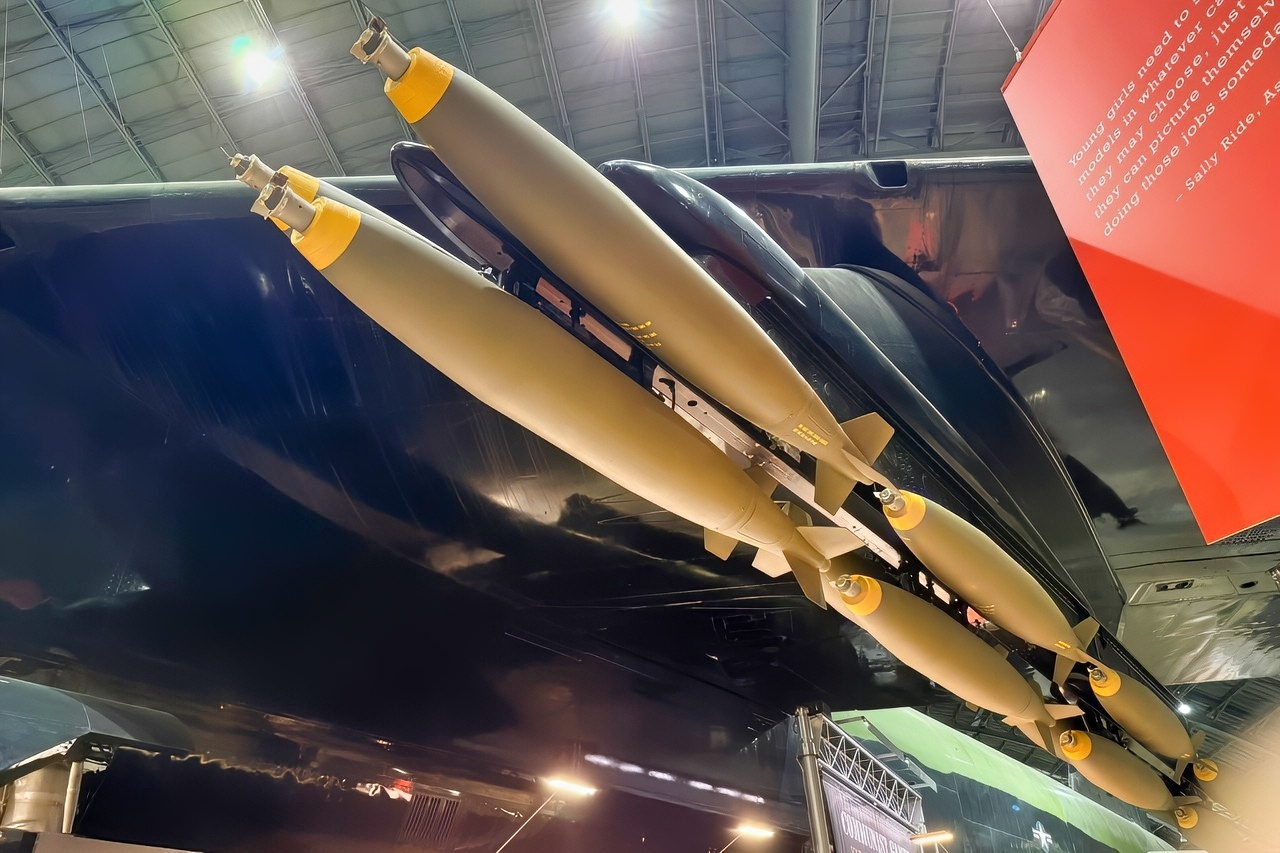
B-52 Bomber Bombs Ready to Go. Image Credit: National Security Journal.
B-1B: The Sprinter That Needs A Smooth Track
The B-1B’s speed and payload made it a darling of the post-9/11 wars. It could loiter, dash, and drop precise weapons in close support of ground forces. Against a sophisticated opponent, that sprint still matters—especially for sea-control missions where it can sling long-range anti-ship missiles.
Yet the B-1B brings a lot of care-and-feeding. Age, structural fatigue, and the accumulated scars of high-tempo deployments exact their toll. In any plan that involves deep strikes near top-tier defenses, the B-1B belongs in the same category as the B-52: a standoff hitter that needs cover, coordination, and plenty of tanker gas.
B-2: Stealth Royalty With A Boutique Crown
The B-2 remains the only operational bomber designed from the wheels up to slip through high-end defenses. It can carry big weapons internally, fly intercontinental missions with only a couple of refuels, and present a radar profile that turns lethal radars into confused guessers.
The catch is scale and upkeep. A few dozen airframes means every jet that goes into deep maintenance is felt across the force. Low-observable skin work is painstaking and time-consuming. Readiness rises and falls with a small supply base and a small pool of specialized technicians. In a crisis, you can surge the B-2—but you can’t multiply it.
The B-21 Raider: The Right Answer—Arriving Slowly
The B-21 Raider is the fix that makes strategic sense: a bomber built for today’s map. It prioritizes deep stealth, flexible payloads, easier maintenance, and open systems so it can absorb new sensors and weapons as they mature. It’s designed to penetrate, not merely launch from the edge. It’s also meant to be procured in real numbers, not as a boutique showpiece.
But airplanes don’t leap from drawings to squadrons. Responsible flight-test, maturing the supply chain, training crews, and building the sustainment base take years. Even after the first units declare initial capability, it will be a long march before the B-21 replaces enough B-1Bs and B-2s to change the nightly air tasking order in a major war.
That delay is where the Air Force’s bomber gamble bites: the threat evolves continuously, while bomber inventory improves discretely—one squadron at a time.
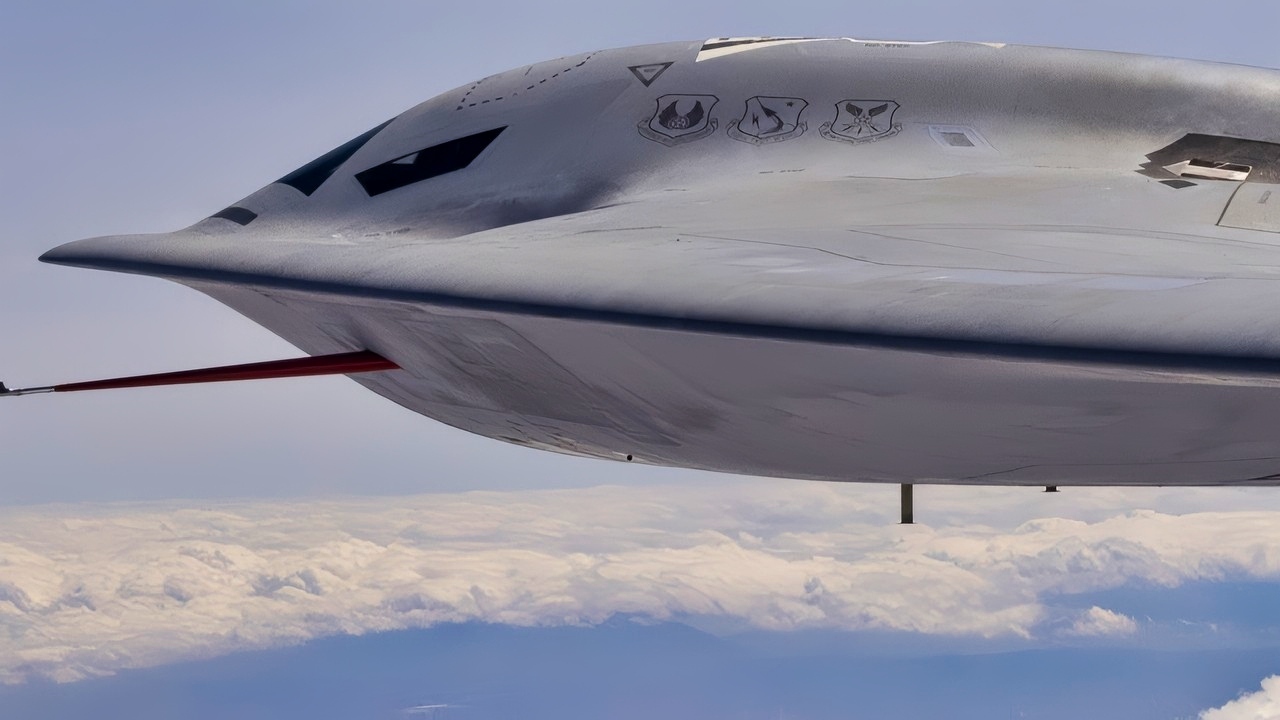
B-21 Raider. Image Credit: U.S. Air Force.
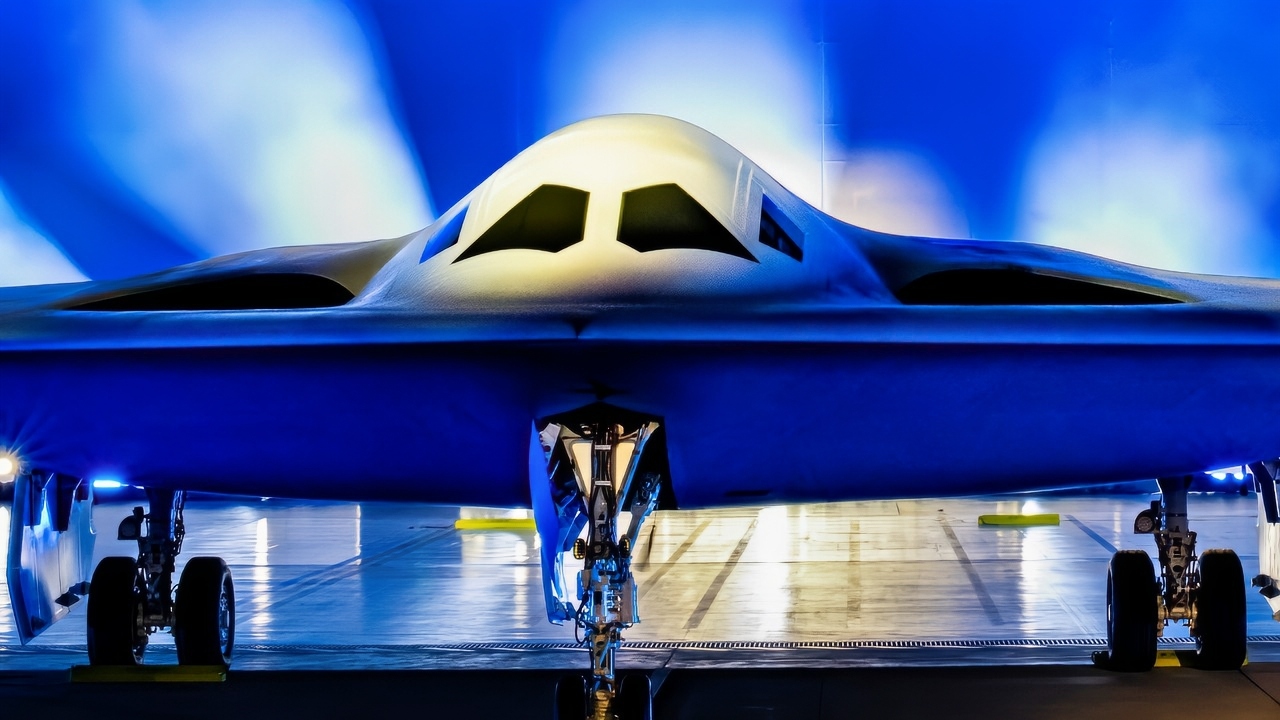
A B-21 Raider is unveiled at Northrop Grumman’s manufacturing facility on Air Force Plant 42 in Palmdale, California, Dec. 2, 2022. The B-21 will be a long-range, highly survivable, penetrating strike stealth bomber capable of delivering both conventional and nuclear munitions. (U.S. Air Force photo by Airman 1st Class Joshua M. Carroll)
The Threat Gets A Vote—And It’s Voting “Layered”
Both China and Russia have spent two decades knitting together integrated air defenses: radars that look at the sky in different wavelengths, long-range missiles to hold high-value assets at risk, mobile medium-range systems to protect gaps, and fighters controlled by airborne radar planes.
Add passive sensors that listen instead of emit, and the defense no longer relies on a single radar you can blind.
For non-stealth bombers, the practical answer is standoff weapons that fly the last hundreds of miles alone. For stealth bombers, the answer is to reduce the number of things that can spot them in the first place, then fly routes that exploit the holes and seams that always exist in real networks.
Both approaches demand stockpiles: of munitions, of decoys, of electronic jammers, and of time in the air to probe and adapt. Stockpiles are built in peacetime—or not at all.
The Standoff Weapon Squeeze
Relying on cruise missiles and other long-reach weapons buys safety for the aircraft and risk for the enemy. It also creates pressure in three places:
Production Capacity. You can’t surge sophisticated missiles like you surge socks. Motors, seekers, and warheads all have long lead times.
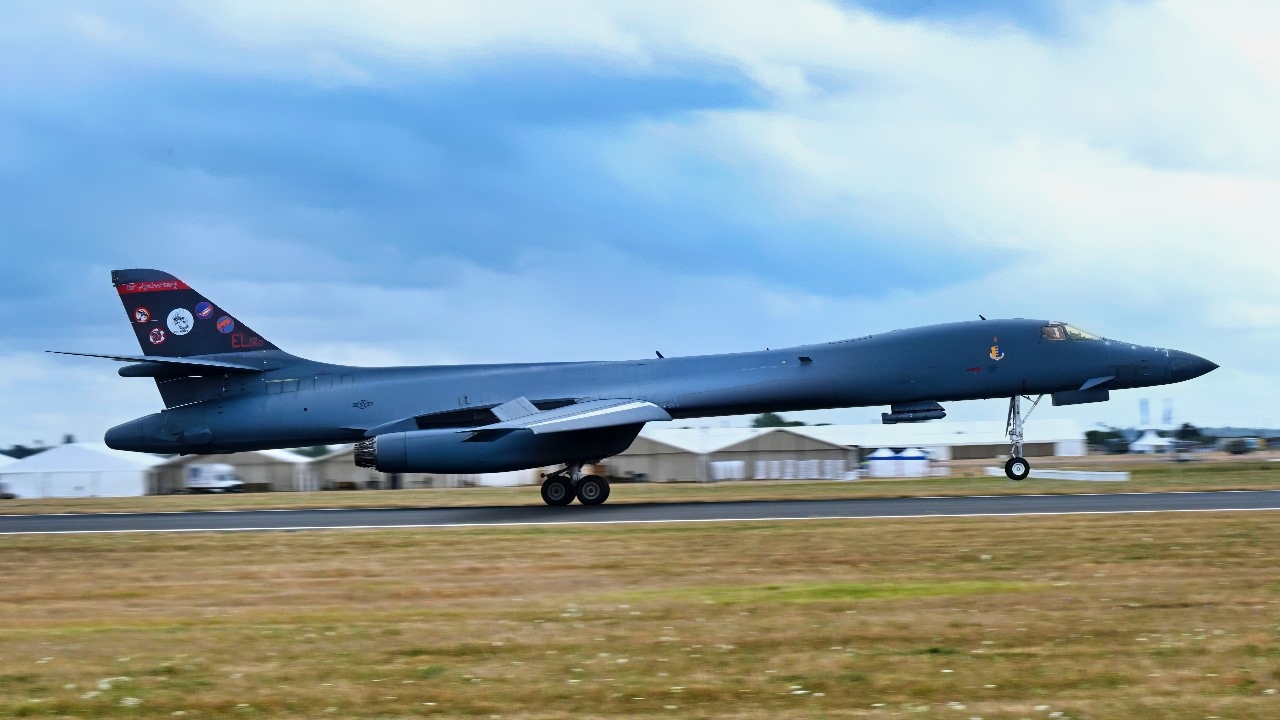
B-1B Lancer Bomber. Image Credit: Creative Commons.
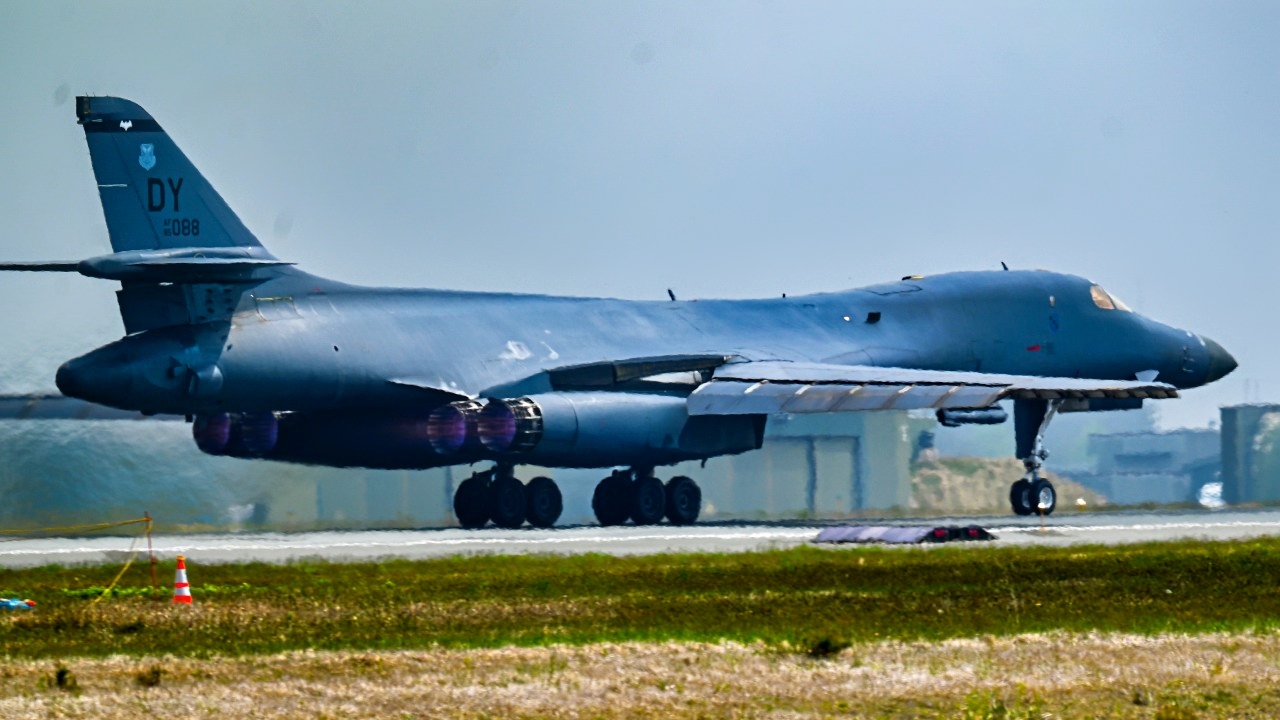
A B-1B Lancer prepares to return to Dyess Air Force Base, Texas, during Bomber Task Force 25-2 at Misawa Air Base, Japan, May 15, 2025. BTF missions provide opportunities to train and work with our allies and partners in joint and combined operations and exercises. (U.S. Air Force photo by Airman 1st Class Mattison Cole)
Cost Per Shot. Against a peer, you will waste some missiles on decoys and deception. If every trigger pull costs a small fortune, you drain magazines—and budgets—faster than planned.
Targeting Quality. Long-range shots require excellent, recent information. That means bombers must be embedded in a larger web of scouts—space assets, patrol planes, drones, and submarines—that keep refreshing the picture.
The fix is industrial as much as tactical: ramp the lines, simplify designs where possible, and field more affordable long-range options alongside the exquisite ones so commanders can shoot in volume when they need to.
The Bomber Mistake in 1 Word: Old (How to Fix It in 4 Recommendations)
1) Make Old Bombers Smarter, Not Just Newer. Upgrades that matter most are those that shorten the kill chain: better radars and receivers to detect threats sooner, cleaner ways to share targeting data securely, and integration of longer-reach missiles with smarter seekers. For the B-52, think “arsenal ship with a brain”; for the B-1B, think “fast magazine” that can pivot from land-attack to anti-ship strike without a depot visit; for the B-2, think “stealth plus” through software and sensor refreshes that keep it slippery against modern radars.
2) Pair Bombers With Uncrewed Teammates. Cheap, long-endurance drones can scout ahead, carry decoys and jammers, or even lug a couple of weapons to draw fire. Think of them as bomber bodyguards that soak up the first salvo. Pairing crewed bombers with autonomous wingmen doesn’t fix everything—but it stretches survivability and creates dilemmas for defenders.
3) Get Serious About Tanker Survivability. No tankers, no bomber campaign. That means more dispersed tanker bases, more austere operating concepts, and flight profiles and refuel points designed from day one to minimize predictability. Over time, it may also mean stealthier tankers or tanker escorts.
4) Train For The First Week, Not The Fiftieth. The first week of a peer war will be a mess: comms disrupted, runways nicked, tankers shifting tracks, and a sky full of decoys. Large-force exercises should rehearse that chaos—dispersed launches, pop-up re-taskings, and mission aborts because the logistics picture changed mid-sortie.

B-2 Bomber. Image Credit: Creative Commons.
5) Buy The B-21 At A Pace That Matters. Procurement that trickles a few jets a year won’t change the fight. Funding should be sized for squadrons, not samples—and the sustainment enterprise (depots, spare parts, trained maintainers) must scale alongside production, or the jets will sit. My idea: buy a lot of these bombers, and buy more than whatever the classified estimates of what is needed for a Great Power war demand. You can thank me later if World War III happens.
The “Why Don’t We Build A New B-52” Question
Every few years, someone floats the idea of building a brand-new conventional bomber instead of waiting for B-21. The idea usually collapses on contact with reality. New designs take a decade; old designs lack the stealth you need on Day One; and split buys multiply training and logistics headaches.
A better framing is roles. Let the B-52 remain the long-range missile truck it excels at, B-52J or not. Let the B-1B be the rapid conventional hitter while it lasts. Let the B-2 punch holes where the door is still bolted shut. And let the B-21 become the default once it’s ready, replacing B-1B and B-2 in a measured, survivable handoff.
The Real Mistake To Avoid
The Air Force’s error wasn’t loving the B-52, the B-1B, or the B-2. It was assuming time—assuming the next bomber would arrive before the threat demanded it, assuming old airframes could shoulder another era with minor tweaks, assuming munitions stockpiles could be built in a pinch.
The fix is not to panic-buy or to gold-plate. It’s to fund enough B-21s, enough long-range weapons, and enough tanker resilience to keep the bomber mission credible when the map is hostile and the defense is layered. And to do it with ruthless attention to maintainability so those jets are not merely owned, but available.
Bottom Line on the Air Force Bomber Challenge
Bombers still matter. They hold distant, hardened things at risk; they signal resolve; they give presidents options short of escalation. But in 2025, much of that power rides on airframes conceived for other decades. Until the B-21 arrives in squadrons you can see on a map, the Air Force is leaning on clever tactics and long-range missiles to bridge a widening gap.
Bridges work—until they don’t. The only way to make sure the next war is deterred rather than fought is to close the distance between what the bomber force must do and what its airframes can survive. That means building the Raider fast, building it in numbers, and making the rest of the team—tankers, munitions, and uncrewed scouts—strong enough to carry the weight.
About the Author: Harry J. Kazianis
Harry J. Kazianis (@Grecianformula) is Editor-In-Chief and President of National Security Journal. He was the former Senior Director of National Security Affairs at the Center for the National Interest (CFTNI), a foreign policy think tank founded by Richard Nixon based in Washington, DC. Harry has over a decade of experience in think tanks and national security publishing. His ideas have been published in the NY Times, The Washington Post, The Wall Street Journal, CNN, and many other outlets worldwide. He has held positions at CSIS, the Heritage Foundation, the University of Nottingham, and several other institutions related to national security research and studies. He is the former Executive Editor of the National Interest and the Diplomat. He holds a Master’s degree focusing on international affairs from Harvard University.
More Military
The U.S. Air Force’s B-52 Bomber and F-35 Fighter Have A Message for Venezuela
Russia’s Mach 4.3 MiG-41 Stealth Fighter Has a Message for the U.S. Air Force
Forget the F-35: The MQ-25 Stingray Might Be the Navy’s Best ‘Weapon’ Against China
Forget the F-35 of F-47: The GCAP 6th Generation Stealth Fighter Is Coming
U.S. and 9 Allies Just Held a Big Naval Exercise Right on China’s Doorstep


